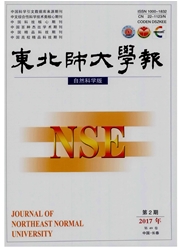

 中文摘要:
中文摘要:
在日本九州野外移栽试验地,通过每隔10d(D10),20d(D20),30d(D30)以及60d(D60)一次的4组去叶试验,研究了不同去叶频次对移栽后假俭草草丛克隆生长的影响.去叶对假俭草蘖数量、匍匐茎长度及构件生物量影响显著,影响模式也较为一致,即蘖数量、蘖出生速率、茎长度、茎伸长速率以及构件生物量的大小顺序均为D30〉D60〉D20〉D10.中等频次的去叶(D30)有助于假俭草的生长,移栽后30~40d是假俭草克隆生长的关键期.
 英文摘要:
英文摘要:
Effects of defoliation frequency on the development (Eremochloa ophiuroides), planted as sprigs, were investigated ring, stolon elongation and biomass production, in southern and establishment of centipede grass after transplantation in terms of tille- Kyushu, Japan. Tiller number, stolon length and module biomass significantly responded to defoliation frequency after transplantation onward, showing a response pattern of D30〉D60〉D20〉D10. Biomass of leaves, stolons and roots at the final measurement showed similar response patterns. Intermediate defoliation contributed most to the regrowth of centipede grass. The period of 30~40 days after transplantation is a most critical time for emergence of defoliation effects.
 同期刊论文项目
同期刊论文项目
 同项目期刊论文
同项目期刊论文
 期刊信息
期刊信息
